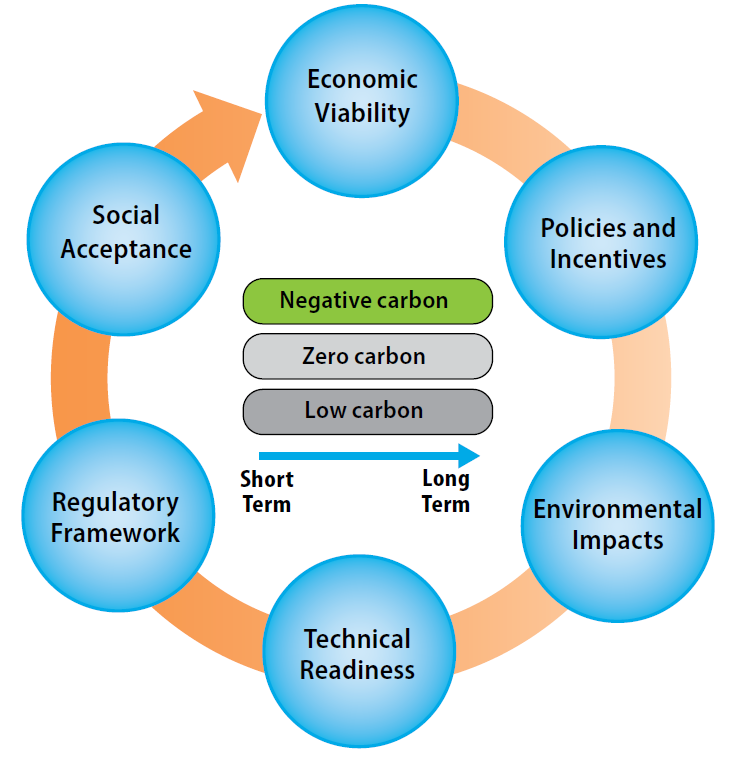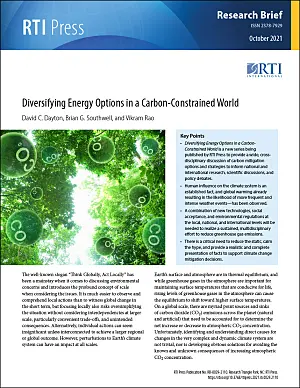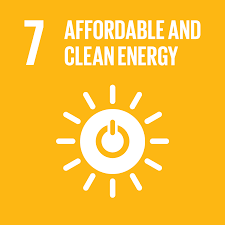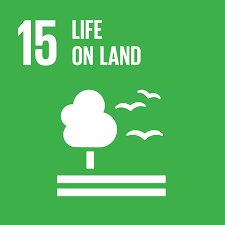Key Points
Diversifying Energy Options in a Carbon-Constrained World is a new series being published by RTI Press to provide a wide, cross-disciplinary discussion of carbon mitigation options and strategies to inform national and international research, scientific discussions, and policy debates.
Human influence on the climate system is an established fact, and global warming—already resulting in the likelihood of more frequent and intense weather events—has been observed.
A combination of new technologies, social acceptance, and environmental regulations at the local, national, and international levels will be needed to realize a sustained, multidisciplinary effort to reduce greenhouse gas emissions.
There is a critical need to reduce the static, calm the hype, and provide a realistic and complete presentation of facts to support climate change mitigation decisions.
The well-known slogan “Think Globally, Act Locally” has been a mainstay when it comes to discussing environmental concerns and introduces the profound concept of scale when considering the issues. It is much easier to observe and comprehend local actions than to witness global change in the short term, but focusing locally also risks oversimplifying the situation without considering interdependencies at larger scale, particularly convenient trade-offs, and unintended consequences. Alternatively, individual actions can seem insignificant unless interconnected to achieve a larger regional or global outcome. However, perturbations to Earth’s climate system can have an impact at all scales.
Earth’s surface and atmosphere are in thermal equilibrium, and while greenhouse gases in the atmosphere are important for maintaining surface temperatures that are conducive for life, rising levels of greenhouse gases in the atmosphere can cause the equilibrium to shift toward higher surface temperatures. On a global scale, there are myriad point sources and sinks of carbon dioxide (CO2) emissions across the planet (natural and artificial) that need to be accounted for to determine the net increase or decrease in atmospheric CO2 concentration. Unfortunately, identifying and understanding direct causes for changes in the very complex and dynamic climate system are not trivial, nor is developing obvious solutions for avoiding the known and unknown consequences of increasing atmospheric CO2 concentration.
We rely on historical data to develop correlations between atmospheric data and planetary events to identify trends over time. The trends are then used to validate complex climate system models that calculate outcomes for different scenarios to predict future events. Any predictions for the future are assessed in terms of a confidence level related to availability of data, quality of the data, and any major uncertainties associated with the data. Confidence in the predictions directly relates to the quality of the data for known climate processes that have been understood and quantified as climate science continues to advance. However, one of the findings from the most recent Climate Science Special Report is that after decades of research, science shows that it is extremely likely that human activity, in particular greenhouse gas emissions, is having a negative impact on the planet (Masson-Delmotte et al., 2021; US Global Change Research Program, 2017).
Some call this impact “climate change,” while others refer to it as a “climate crisis.” It’s tempting to conclude that accelerated release of greenhouse gas emissions from increased use of cheap and abundant fossil resources that have fueled economic growth have caused recent catastrophic global events. Although there is no definitive cause and effect relationship, the Sixth Assessment Report from the Intergovernmental Panel on Climate Change (IPCC) (Masson-Delmotte et al., 2021) concludes that human influence on the climate system is an established fact and that global warming has been observed. Years of data show that surface temperatures are rising, glaciers and polar ice caps are melting at faster rates, and sea levels are rising.
The US Environmental Protection Agency (EPA) Climate Indicators also suggest that extreme weather events are likely to become more frequent or more intense as climate change persists (US Environmental Protection Agency, 2016). The frequency and intensity of extreme heat can lead to extended droughts sparking increased numbers and severities of wildfires caused by natural (“dry lightning”) and human (electricity transmission) actions. Five of the ten largest fires to date in California were in the 2020 fire season (Ray, 2021). Devastating severe weather events with intense wind and rainfall can lead to coastal and inland flooding. According to the EPA, the Accumulated Cyclone Energy Index suggests that storm intensity has increased over the past 20 years, and 80% of the most active years since 1950 have occurred in the past 25 years (US Environmental Protection Agency, 2016). Aside from the obvious economic burden of disaster relief, other consequences like increased crop damage, could lead to food supply shortages. More frequent and intense wildfires can lead to deforestation, poor air quality, and loss of habitat for biodiversity. It seems like we are finally at a point where the mortgages for relatively short-term economic prosperity have come due after centuries of excess.
Our Changing Climate System
Beginning in the mid-1700s, the Industrial Revolution catalyzed the consumption of fossil fuels, leading to increased CO2 emissions. As more CO2 was released, it exceeded the amount of CO2 that was being used for photosynthesis or captured by the oceans, and levels of CO2 in the atmosphere increased. Figure 1 shows the total global CO2 emissions (Bp Statistical Review of World Energy 2021, 2021), along with the concentration of CO2 measured in the atmosphere (Cox et al., 2021). Both global CO2 emissions and atmospheric CO2 concentrations are steadily increasing as fossil fuels (coal, oil, and natural gas) that have been trapped beneath Earth’s surface for millennia are extracted and consumed. The CO2 in the atmosphere also correlates with an increase in average global surface temperature, as plotted in Figure 1.
Figure 1.
74506Annual total global carbon dioxide (CO2) emissions and average global surface temperatures compared with atmospheric CO2 concentration
Note: These charts compare total CO2 emissions (left panel)a and average global surface temperatures (right panel)b to atmospheric CO2 concentration.c
a bp statistical review of world energy 2021. 70th ed. London: BP; 2021. Available from: https://www.bp.com/content/dam/bp/business-sites/en/global/corporate/pdfs/energy-economics/statistical-review/bp-stats-review-2021-full-report.pdf
b Rohde RA, Hausfather Z. The Berkeley earth land/ocean temperature record. Earth System Science Data. 2020;12(4):3469–3479. https://doi.org/10.5194/essd-12-3469-2020
c Cox A, Di Sarra AG, Vermeulen A, Manning A, Beyersdorf A, Zahn A, et al. Multi-laboratory compilation of atmospheric carbon dioxide data for the period 1957–2020. 2021 [cited 2021 Oct 8]. Available from: https://www.esrl.noaa.gov/gmd/ccgg/obspack/data.php?id=obspack_co2_1_GLOBALVIEWplus_v7.0_2021-08-18
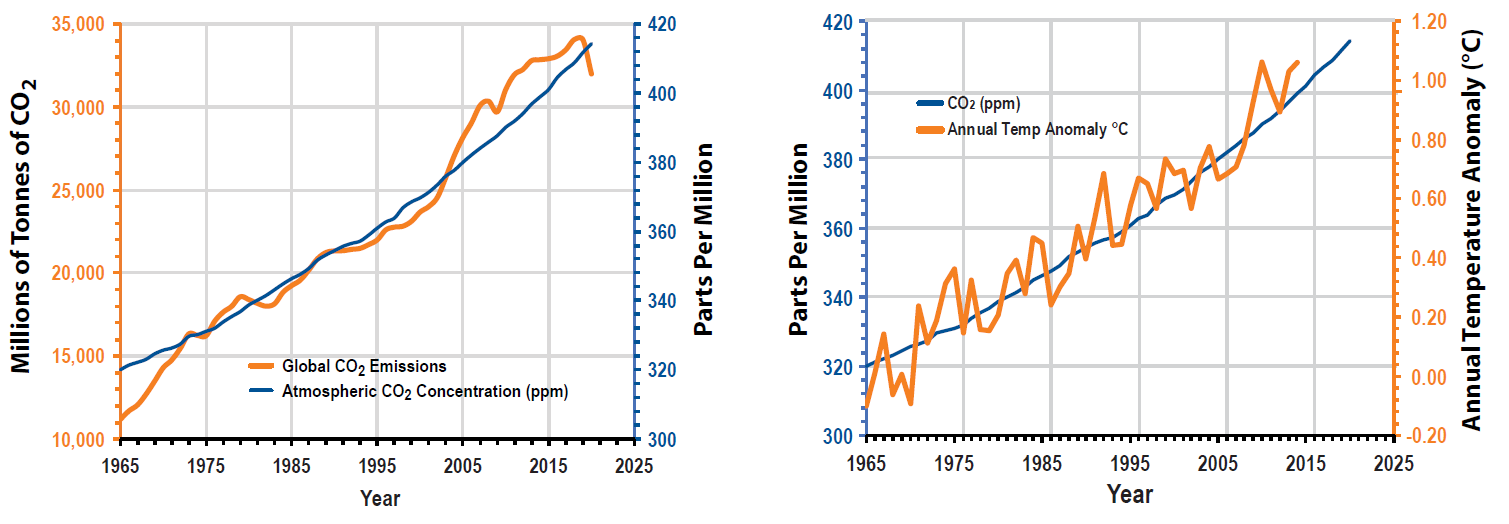
Over the past four decades, a series of accords and agreements have attempted to reduce the impact of global warming by curbing greenhouse gas emissions. In 1979, the World Meteorological Organization in collaboration with United Nations and other global organizations, convened the First World Climate Conference. An acknowledgment that improved scientific understanding is needed to “foresee and prevent man-made changes in climate that might be averse to the well-being of humanity” led to the establishment of the World Climate Programme. The United Nations established the IPCC in 1988, followed shortly by the Second World Climate Conference in 1990. Recent notable global climate conferences and agreements include the 1992 Earth Summit in Rio De Janeiro, the 1997 Kyoto Protocol, the 2009 Copenhagen Accord, and the 2016 Paris Agreement.
Many accords and agreements focused on a global reduction in greenhouse gas emissions to specific levels in the future, relative to a previous year. For example, the Biden Administration recently set a target for 50% reduction in greenhouse gas emissions by 2030, relative to 2005 levels (White House Briefing Room, 2021), continuing a general declining trend in US emissions over the past 15 years (US Environmental Protection Agency, 2021). Reducing greenhouse gas emissions to stabilize and reduce atmospheric CO2 concentration in the atmosphere to a percentage of pre-industrial levels is another approach. These metrics focus on energy production and use—reducing fossil carbon emissions by using less fuel to obtain the same economic benefit or substituting renewable alternatives for fossil fuels to produce clean energy.
Another way of looking at the problem is to focus on limiting the impact of greenhouse gas emissions on global warming and the associated consequences of climate change. Within this context, the scientific community established a goal to prevent the future average global temperature from increasing no more than 2°C (later revised to “preferably less” than 1.5°C) compared with pre-industrial (1850–1900) averages (US Global Change Research Program, 2017). Absent is the time frame for achieving emissions reduction targets or the magnitude of the reductions. The goal is to simply do what is necessary to maintain or reduce the global average temperature change into the future. This often translates into reducing the net global greenhouse gas emissions to zero by the middle of the 21st century.
The 2016 Paris Agreement goes even further by striving to “hold the global average temperature increase to well below 2°C above pre-industrial levels and pursuing efforts to limit the temperature increase to 1.5°C above pre-industrial levels” (“United Nations Framework Convention on Climate Change,” 2021). Computer simulations of global climate models predict an alarmingly high number of scenarios in which global warming produces complementary effects that amplify and accelerate climate changes, leading to irreversible changes to the climate system (Hausfather et al., 2020). The confidence in these predictions is increasing as scientific progress continues to advance our understanding of how greenhouse gas emissions impact climate change and more and better data become available to evaluate historical warming trends for comparison.
An updated assessment in the IPPC’s Sixth Assessment Report (Masson-Delmotte et al., 2021) indicates that the global average temperature has increased by 1.09°C for the decade 2011–2020 compared with 1850–1900. The report also warns that “unless there are immediate, rapid and large-scale reductions in greenhouse gas emissions, limiting warming to close to 1.5°C or even 2°C will be beyond reach.” In fact, the current trajectory predicts that the global average temperature increase will exceed 1.5°C in as few as 20 years (Masson-Delmotte et al., 2021).
All of these past events have led to the UN Climate Change Conference of the Parties (COP26) being held October 31, 2021, through November 12, 2021, in Glasgow, Scotland. The stated goals of COP26 are to (1) secure global net zero emissions by mid-century to keep the 1.5°C target within reach, (2) enable and encourage countries to protect communities and natural habitats, (3) engage international financial support to fund these initiatives, and (4) work together through collaborations between governments, global businesses, and civil societies across the world. Significant progress is being made in reducing carbon emissions, but the global community recognizes the need for more urgency to address the problem collectively. As nations pledge their commitment to achieving net zero-carbon emissions by the middle of the century, the established targets need to translate into actions as developed countries and developing countries work together to produce clean energy solutions.
The Current Situation
Faced with this reality, what are the options for the future? How do we “flatten the curve?” Are we too late? Or is now the time to finally tackle this seemingly daunting challenge that may seem like “boiling the ocean”? We can take a little comfort from the fact that we did not get to this point overnight. The pre-industrial levels constantly referenced are roughly 150 years ago, but global greenhouse gas emissions have more than doubled in only the past 50 years (Figure 1) so the 20-year time frame for stabilizing the climate seems a little more attainable by reversing relatively recent behaviors. Technological advances since the 1950s are dramatic and if we can implement new and developing technology to combat the problem, and change our behaviors, success could be realized. But there is not a single solution that will reverse the effects of climate change. All options should be considered collectively but maximizing global impact may require the accumulated benefits from actions that take advantage of regional or local situations. A sustained effort to reduce greenhouse gas emissions and patience to await the long-term benefits of immediate actions will be paramount.
Fortunately, we are also not starting from scratch. Zero-carbon electricity production options, like hydropower, geothermal, nuclear, wind, and solar are commercially available. In many areas, utility-scale solar and wind power can be delivered at levelized costs well below that of coal. Low-carbon renewable fuels—like ethanol, biodiesel, and renewable diesel and jet fuel—are commercially available. Technologies are being developed and deployed to improve energy efficiency in residential and commercial buildings (energy efficient building designs, better insulation, LED lighting, automated building control systems, etc.) and in industrial manufacturing (low-energy materials, process improvements and integration, automated process control, etc.).
Technology options can be classified based on the potential impact on global carbon emissions reduction and the relative immediacy of when that impact would be likely to occur. The potential impact of technologies on global carbon emissions can be categorized as low carbon, zero carbon, and negative carbon, with possible deployment immediately or in the short or long-term. Low- and zero-carbon emission technologies are readily available, or could be available in the relatively short term, but further development of negative-carbon technologies is required before they can be fully realized. Table 1 shows some examples of various technology options for reducing carbon emissions and a relative time scale for implementation.
Table 1.
74507Relative deployment potential for carbon mitigation options
| Immediate | Short term | Long term | |
|---|---|---|---|
| Negative Carbon | |||
| Zero Carbon | |||
| Low Carbon |
Examples of low-carbon solutions that are being implemented or can be implemented shortly include substituting natural gas for coal in baseload electricity production. Both natural gas and coal are fossil fuels, but natural gas is 40% less carbon intensive than coal. Natural gas combined-cycle power plants are up to 60% efficient (Hoang & Pawluskiewicz, 2016), compared with pulverized coal-fired power plants that have up to 45% efficiency (Fu et al., 2015). With continued development of carbon capture and storage technologies, natural gas and coal-fired power plants can approach zero-carbon emissions.
Other low-carbon technology options that can be implemented immediately include energy efficiency improvements like higher vehicle mileage efficiency with hybrid electric and flex-fuel vehicles, LED lighting, and first-generation biofuels (ethanol from corn and molasses and biodiesel and renewable diesel from fats, oils, and greases). Hydropower, nuclear energy, and geothermal energy are all zero-carbon technology options for electricity production that can be installed today. The production of electricity from wind and solar has recently become economically competitive with conventional baseload sources, and the market share of these renewable (zero-carbon) electricity options is rapidly increasing. Especially during periods of overproduction, these zero-carbon electrons can be converted into chemical energy as renewable hydrogen (from water electrolysis) that can be used as a natural gas substitute, in hydrogen fuels cells, or for renewable ammonia production.
Available low- and zero-carbon technologies need to be deployed at a much faster rate to reduce carbon emissions, but negative-carbon technologies that use CO2 to make fuels, chemicals, and construction materials are needed urgently. Rapid development and deployment of negative-carbon technologies is essential to meet the central goals of COP26. Geothermal energy offers considerable promise as a utility-scale renewable source that can be load following (matching the peaks and valleys of demand). Current operations, termed hydrothermal, while very valuable where prevalent (e.g., Iceland) are not considered scalable. Newer technologies (so-called “hot rock” geothermal) that tap the limitless energy from the center of the earth can be deployed in most parts of the world once deployed at scale.
Most would agree that carbon mitigation at scale has been slow in coming. The following examples could contribute to the arrival of a tipping point:
Storage in support of renewables at a fully loaded cost of US$0.005 per kWh with few or no limitations for achieving scale. Solutions initially at a cost of US$0.010 per kWh, with a glide path to the lower figure, would be acceptable.
Carbon capture from any industrial process, with CO2 concentrations in the waste streams ranging down to low single digits. The two major industrial producers of CO2, steel and cement, easily fall into the capturable range. Scalable processes achieving carbon capture at a cost of US$30 per tonne CO2 are developing with a glide path to US$20 in 5 years. Geologic storage of captured CO2 at under US$10 per tonne already is available and scalable (Schmelz et al., 2020) Compared with a European cost of carbon of €45 per tonne CO2 (as of this writing), the combined cost of capture and storage would be both economical and green.
Although the absolute costs will be refined as these technologies are deployed, the costs are generally expected to decrease as the technologies mature in the market.
Complementary Options Moving Forward
The enormous scale and complexity of climate change requires consideration of all technical and nontechnical solutions in an integrated strategy to reduce greenhouse gas emissions to limit the average increase in global temperature to less than 1.5°C compared with pre-industrial levels. This requires the development and deployment of all commercially viable technology solutions to maximize impact and the creative integration of various technologies that can be optimized for specific regional applications. Unfortunately, cost and convenience often prevent greater penetration of developing “clean” technologies. New technologies are certainly part of the solution, but new societal paradigms and behaviors will be influenced by economics (how much more does it cost), policy (what will be mandated and what incentives will be available), and environmental and social (positive or negative unintended consequences) considerations.
New breakthrough technology by itself is seldom enough and some adaptation toward environmentally conscious decisions may likely occur as demonstration and deployment proceed. In both circumstances, supportive and complementary policies and regulations are needed to incentivize change and provide the necessary market push while societal pressure to change the status quo and modify behavior can help provide the market pull. Figure 2 shows the necessity of considering multiple technical and nontechnical facets for a holistic assessment of the viability of a technology.
After understanding the timeliness and scope of carbon impact, one needs to consider technology options in the context of multiple interrelated factors. The technology needs to be assessed to determine whether it is ready for commercial deployment or whether additional development is needed. Nontechnological constraints and incentives are probably more important than the technology itself. Social acceptance and recognition of the benefits is needed to justify higher costs until the technology matures. This may vary widely for different countries, regions, or locales, especially if certain social groups are more positively or negatively affected by the technology. Regional economic prosperity will have a big impact on technology adoption, not just in terms of willingness to pay for the technology but also in terms of the impact on existing local infrastructure and markets. Of course, establishing favorable policies can lessen the economic burden with incentives for new, low-carbon technologies or disincentives for high-carbon emission options. Environmental regulations are another vehicle for incentivizing carbon emission mitigating technologies, but the noncarbon environmental benefits and costs must also be considered in light of potential unintended consequences to air quality, water quality and use, and land use.
Increasing urgency to develop and implement strategies to mitigate the effects of greenhouse gas emissions on climate change needs to be met with caution, however, to make sure decisions are based on scientific evidence and not on emotions or political, environmental, or economic agendas. The problem and solutions are multidimensional and complex but much of the dialogue fails to take a holistic, interdisciplinary perspective, due to preference for a particular technology or ideology in support of economic or political gain.
There is a critical need to reduce the static in public discourse, calm the hype, and provide a realistic and complete presentation of facts for broad public and key stakeholder understanding and to drive climate change mitigation decisions. This becomes even more important because of the increasing number of headlines touting corporate strategies and climate action plans to reduce carbon footprints, energy companies investing in renewable energy and carbon capture technology development, and investment firms increasing assets in companies hoping to achieve carbon neutrality. Determining the impact of all these announcements requires a clear presentation of the facts and full disclosure of the assumptions behind the figures.
Insofar as climate change mitigation poses social dilemmas—in terms of individual behavior, popular support for government policy, or public pressure on organizations—we need to consider inputs from social science for our forecasting. Importantly, public understanding (of climate change and strategies to mitigate climate change) poses daunting challenges but also underappreciated opportunities. Despite commentary about the prevalence of climate change denial, popular concern about climate change has intensified considerably in recent decades due to the intensity and frequency of natural disasters. Over the course of roughly 30 years, for example, American concern about climate change has changed dramatically: roughly one-third of 1994 General Social Survey (GSS) respondents reportedly believed “a rise in the world’s temperature caused by the greenhouse effect” is “extremely” or “very” dangerous, whereas almost 60% of 2018 GSS respondents expressed such concern (National Science Board, 2020). In a 2016 Pew Research Center study, most US adults agreed that climate scientists should play a major role in policy decision-making related to global climate change (Funk & Kennedy, 2016). Climate change is more salient as a societal concern than it was a scant three decades ago.
Exactly what mental models people hold regarding climate change mitigation—what sort of detailed conceptualizations of options, mechanisms, and trade-offs reside in the brains of the general population—is not clear, but we know that a sizable proportion of the population does not have extensive and detailed knowledge about the processes involved in energy harvesting and the means to mitigate greenhouse gases. Recent work suggests low awareness of various mitigation strategies (Pianta et al., 2021) and less-than-widespread comprehension of basic energy processes (Southwell et al., 2012).
A combination of prevalent concern about the threat of climate change and relatively little concrete understanding of the details involved in technology options such as those detailed in Table 1 suggests potential volatility in public perception. Such volatility might slow future public acceptance but could also be a sign of rapidly increasing acceptance of new technology options as people learn more about and place trust in solutions that promise to reduce environmental threats. We have, after all, seen relatively sudden shifts in consumer sentiment in related domains. Available literature on automated car technology adoption suggests that consumer experience is a distinct predictor of trust in technology (Tenhundfeld et al., 2019). Consumer sentiments can change with greater experience. We could expect public opinion to change radically with exposure to new information and associated reasoned analyses.
Getting the Word Out
In response to the existential threat of climate change to the future of society as we know it, global energy generation and use are shifting to lower carbon-intensive technologies that emit fewer greenhouse gases. Ongoing research in alternative energy technologies and carbon capture, storage and use must be accessible to a diverse group of stakeholders—in basic science, applied technology, and public policy—and useful for students and concerned citizens.
We are responding to this critical need for translation of available facts by developing a new series of books entitled Diversifying Energy Options in a Carbon-Constrained World to be published by RTI Press. The series will provide a wide, cross-disciplinary discussion of carbon mitigation options and strategies being developed to combat and ultimately stabilize or reduce the effects of global warming. These discussions will, in turn, inform national and international research, scientific discussions, and policy debates. The series will produce peer-reviewed publications focused on the variety of technology options for mitigating global carbon emissions, assessed within the context of specific nontechnology (environmental, economic, and social) considerations reflecting research in social and laboratory sciences.
We aim to produce a straightforward, holistic treatment of technologies to inform decisions for mitigating climate change, with all related facets brought together coherently in each volume. Each book in the series will address a clearly defined technology (or closely related technologies) in a format and language understandable to educated lay readers, including students. All books will address a set of common questions for the technology, such as:
What are the historical and current technical readiness, advantages, and challenges?
What are the cost implications?
Are policy initiatives necessary for viable adoption, whether by the general population or by industry?
What is the potential for scalability? And what are the likely global impact and fit with other carbon mitigation measures in the short and long terms?
Do technology, cost, and policy drivers, as well as societal impacts, vary by countries/regions/populations?
The first two volumes in the series will both focus on a high-level discussion of strategies to reduce or eliminate carbon emissions from the more energy-intensive sectors in society, such as electric power, transportation, industry (steel, cement, chemicals, plastics, and paper), and agriculture and forestry. Carbon Mitigation Opportunities will focus on the use of technology (fuel switching and carbon capture, storage, and utilization) and policy options (carbon tax and emissions trading) to encourage adoption of strategies to remediate carbon that has already been emitted or is being emitted. Renewable Energy Opportunities will discuss substituting fossil fuels with low-, zero-, or negative-carbon alternatives for producing electricity, transportation fuels, and products. The intent is for the volumes to provide a multidisciplinary perspective on options to reduce and reverse the impacts of climate change. They will include discussion of technology options, policy incentives, environmental benefits (intended and unintended), and behavioral considerations and how these seemingly incongruent facets need to converge into regional solutions for maximum global benefit.
Future volumes will provide more discussion of topics such as wind, solar, hydropower, geothermal, nuclear, wave energy, hydrogen fuel cells, renewable natural gas, biofuels, energy storage, and energy efficiency. Alternatively, future volumes may also consider sector-specific topics including alternative energy options for electricity production, alternative energy options for transportation, optimizing efficiency in the food-energy-water nexus, and impact of alternative energy on land use.
